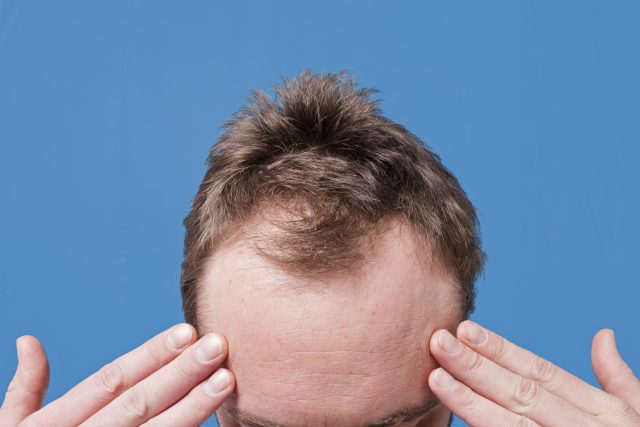Testosterone is often considered the hallmark of masculinity, yet its significance extends beyond mere gender identity. While low testosterone levels certainly do not diminish one’s masculinity, this hormone governs several crucial male attributes. It influences sperm production, body composition, facial hair growth, and sex drive.
Regrettably, recent decades have witnessed a concerning decline of 20% in men’s testosterone levels. This decline raises alarms, as maintaining adequate testosterone levels is pivotal for sustaining vitality and overall well-being.
But what benchmarks define ‘normal’ testosterone levels in men?
This discourse aims to elucidate the optimal testosterone levels required for peak physical, mental, and sexual health. Additionally, we will delve into the methodologies for measuring testosterone, its age-related fluctuations, and the existing limitations in establishing a ‘normal’ testosterone range.
Deciphering Normal Testosterone Levels
It is imperative to acknowledge that every man is unique, and a universally precise measurement of ‘ideal’ testosterone levels is elusive. Testosterone levels vary among individuals, throughout the day, and as the aging process unfolds.
Nonetheless, a healthy spectrum of testosterone levels is generally considered to fall within 7.6 to 31.4 nmol/L.
Furthermore, an assessment of free testosterone, the unbound form, can also be performed. Adequate levels of free testosterone typically exceed 0.3 nmol/L.
Quantifying Testosterone: Method and Timing
Accurate measurement of testosterone levels necessitates a blood test. Given that this hormone utilizes the bloodstream as its conduit, blood tests provide a reliable gauge of testosterone levels. Samples for analysis can be obtained by a healthcare professional from a vein and in some cases, overseas, through a finger prick via a home test kit.
To ensure precision, blood tests should ideally be conducted around 9 am, as testosterone levels peak in the morning and may decrease by 10 to 20% throughout the day. Notably, the extent of this fluctuation is influenced by age, with older men exhibiting more stable testosterone levels compared to their younger counterparts.
After sample collection, an analysis is performed, encompassing measurements of total and free testosterone levels, of note, it’s possible to have scenarios where total testosterone levels are within the ‘normal’ range, yet free testosterone levels are low. This underscores the significance of not solely relying on total testosterone measurements, as they may not convey the complete hormonal status.
Unraveling Age-Associated Testosterone Changes
Testosterone levels embark on a dynamic trajectory throughout a man’s lifespan. After commencing at modest levels at birth, they peak during late adolescence. This elevated state endures for approximately a decade. Subsequently, around the age of 30, a gradual decline in testosterone levels becomes apparent.
Research indicates an average annual decline of about 1.6% in total testosterone and 2 to 3% in free testosterone (Mohr et al. 2005; Zirkin and Tenover 2012).
Consider the ensuing table for an overview of average male testosterone levels across different age brackets:
Age Range Average total testosterone (nmol/l) Average free testosterone (nmol/l) SHBG 25-34 21.38 0.428 35.5 35-44 23.14 0.356 40.1 45-54 21.02 0.314 44.6 55-64 19.49 0.2888 45.5 65-74 18.15 0.239 48.7 75-84 16.32 0.207 51.0 85-100 13.05 0.186 65.9 Source: Vermeulen, A. (1996). Declining Androgens with Age: An Overview. In Vermeulen, A. & Oddens, & B.J. (Eds.), Androgens and the Aging Male (pp. 3-14). New York: Parthenon Publishing.
These findings underscore the consistent reduction in total and free testosterone levels as age advances. This phenomenon is accompanied by an elevation in SHBG (sex hormone-binding globulin), a protein with which testosterone binds in the bloodstream. Elevated SHBG corresponds to reduced levels of unbound testosterone, contributing to the substantial decline in free testosterone observed with aging.
Reevaluating ‘Normal’ Testosterone Levels
The determination of ‘normal’ testosterone values on laboratory reports emanates from studies conducted among diverse male populations. However, the normal range calculations, involving statistical analysis, do not exclusively consider symptomatic expression. The top and bottom 5% of values are often excluded, yielding a ‘normal’ range applicable to the middle 90% of the population.
A critical caveat surfaces here – these ranges may not align with the onset of symptoms experienced by individuals. As a result, the present approach may overlook men with genuine symptoms despite falling within the ‘normal’ range.
Our forward trajectory necessitates a comprehensive reassessment, driven by robust research, as opposed to purely statistical extrapolation.
Navigating Forward: Enhanced Diagnosis of Low Testosterone
While testosterone tests and conventional reference ranges offer valuable insights into low testosterone diagnosis, they are just one facet of a multifaceted landscape. Attaining an accurate diagnosis necessitates an evaluation of total and free testosterone levels, alongside essential biomarkers. For instance, the British Society of Sexual Medicine (BSSM) proposes that elevated luteinizing hormone (LH) warrants consideration for testosterone replacement therapy (TRT). The role of SHBG in modulating testosterone levels also merits profound consideration.
A comprehensive assessment of these parameters furnishes a holistic understanding of an individual’s health status and aids clinicians in tailoring an appropriate treatment strategy. For an all-encompassing profile, consider undergoing tests via private health services such as Mr.
In Conclusion: Rethinking the Paradigm
While ‘normal’ testosterone ranges are informative, they possess inherent limitations. A person exhibiting ostensibly ‘normal’ testosterone levels may grapple with genuine symptoms, underscoring the need for a more nuanced diagnostic approach.
Ascertaining a man’s testosterone status mandates a synthesis of total and free testosterone levels, coupled with an astute analysis of symptomatic presentation. The journey ahead involves refining our understanding through diligent research and the establishment of symptomatic benchmarks that resonate with individual experiences. The pursuit of holistic well-being demands nothing less than an incisive and empathetic approach to men’s health.

Dr Afraz Adam
Chief Medical Officer
MBBS. FRNZCUC





